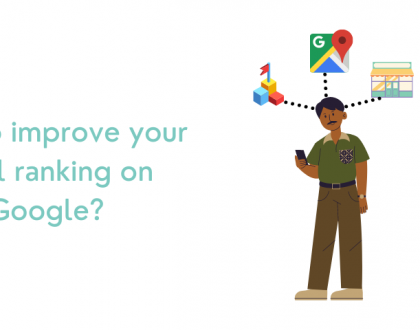Forecasting SEO Traffic and Returns for your Business

7 Min Read
The SEO Community is very much a data-based niche. We have adapted to algorithms and love analytics. We like arranging numbers to determine the best path forward and make apt decisions for our clients with the data at hand. But SEO Forecasting is an arena where the rules change, and the players tend to change the rules as well.
We all realize the goal is to push forward and provide a reliable ROI for our clients via projections. But all forms of forecast come with a disclaimer and it is known to be the best guesses in the current environment. Will it be accurate? Probably not, but it’s the best we can offer, and provided the direction is good, the business will prosper either way.
We have covered many topics based on forecasting SEO traffic right from the basics to the factors that affect organic forecasting to various tools and resources like SEMrush, Ahrefs, Screaming Frog where you can mine complete data required for the same.
Let’s look into something more basic and understand about business forecasting generally and some techniques to forecast SEO revenue.
3 Basic Techniques to Conduct Forecasting for your Business
There are three elementary methods in which you can forecast the outcome of your business. There are many contributing factors that affect the forecast as well, of which, most importantly is the type of forecasting that you’re handling.
Qualitative Forecasting
Some businesses could be very new, they are startups who have just begun their journey, and it is conclusive that they may have no historical data that can be used to make predictions of their future. In such cases, the best option to go for is qualitative forecasting.
Here, human judgment is key and the test is to operate this judgment in an impartial, logical way that would ultimately lead to quantitative estimates. This technique is the best for long-term forecasts, to forecast new business startups, and forecasts of margins.
Quantitative Forecasting
Of course, quantitative forecasting totally relies on data that can be measured and manipulated. Also called statistical forecasting, this method mostly uses data from past performance to evaluate if the business is flourishing or deteriorating – and what is the speed with which this is occurring.
This method is best suited for short-term forecasting – in predicting the near future based on the data from the past performance, and this is more likely to be accurate.
Causal planning
Causal planning or modeling is an elaborate forecasting method that tries to account for all the factors of cause and brings out a given outcome. The concept assumes that the variable to be forecast has a cause and effect relationship with the independent ones of the forecast.
If there is a shortfall of certain kinds of data, initially it may be necessary assumptions about some of the relationships and then track the happenings to determine whether they are true. This method needs continuous revision as and when more knowledge becomes available.
If it hasn’t crossed your mind already, we have a question for you…
What is the Difference between a Projection and a Forecast?
The type of assumption involved is the differentiating factor between them. A projection makes certain assumptions and anticipates the results based on those assumptions. A forecast is basically derived from historical data and an expectation underlies that this data might cause certain future events to occur.
In simple terms, a projection can only tell you the future occurring based on hypothetical assumptions but forecasts tell businesses what will actually happen because those estimates have data backed up.
Forecasting SEO revenue. Why is it Important?
When a business flourishes and grows in size, it invests in marketing its products and services. In such scenarios, forecasting plays a very important role in allocating resources effectively for the future. Here are some of the benefits:-
It ensures resources are assigned effectively
Businesses need to know the outcome of investing in SEO that is likely to generate in a given time period. If you sell a service, forecasting can help you determine what resources are needed to deliver the services that you will sell.
It helps drive effective budgeting
The ability to forecast your SEO outcomes can positively help your business conclude the revenue growth or change in a given time period. By forecasting your organic traffic, budgeting your capital utilization can be maintained effectively.
It also helps identify new market opportunities
Forecasting organic ROI can help in determining your customer’s life-long value which in turn can also be useful for justifying the investments made in SEO and other forms of marketing.
What You need for SEO Forecasting?
Before heading towards the right technique to conduct your forecasting, below are the essentials that you need to have ready for getting started. These are the factors that affect organic forecasting.
– Minimum Two years of historical organic traffic data
– A list of events that happened and affected your search traffic backdated for at least two years
– Seasonality data
– SEO plan for the next year
How to Forecast Organic Traffic the Right Way?
Before you can produce revenue from organic search, you have to generate traffic. Pretty logical, right?
A very basic method is to collect as much certainty as possible, initially. It’s pretty much a good place to start…
Evaluate the current situation
You need to have a fairly good picture of the market size, your ranking within the marketplace, and what would be the value of an increase in organic traffic of the business website.
At this stage, the firm steps to be taken are these:
– Head to third-party SEO Forecasting tools like SEMrush, Ahrefs, etc., and Google Analytics and Search Console, examine the search volume of your target keyword, canceling out the irrelevant ones. You’ll get an idea of the appropriate market size which depends on the nature of your industry.
– Check out your current ranking position (you can use AWR cloud to retrieve ranking data and competitive data for your ranking estimate). This exercise gives you an idea of weaknesses and strengths and calculating estimates would make much more sense.
– With all the above data, assess your current rate of growth. This would act as your base forecast, from which you would add other factors like seasonality, events, etc., and build your own estimated trajectory.
Identify Future Improvement Opportunities
From here, it starts to get slightly obscure on the predictions following your proposed activity. You shouldn’t be too ambitious as it can carry a huge risk to the credibility of your forecast nor undermine the base forecast, you need to be sensible.
Any increase must be plausible and must be backed up with data as well as logical reasons, so it is recommended that you tie your improvements into specific events. When starting to calculate the potential improvements, you need to precisely consider the following points:
– What does the development schedule look like, and when the recommendations would possibly be implemented. If there is no gap in this schedule, the recommendations may not be implemented soon.
– Has the site undergone any penalty due to manual action or any algorithmic updates? If so, the forecast needs to be built considering the time taken to resolve the main and related issues.
– The competitiveness of the industry that you’re working in, would have a huge impact on the ease and the speed on which you expect to see the improvements.
– The Content Marketing schedule. Complying with the schedule, you need to project your expectations – when you expect to acquire new links and how many you can realistically achieve.
The primary goal here is to avoid suggesting blanket improvements with no connection to the work schedule proposed.
Finally, Forecasting your Improvements
Once you have finalized the future events you plan to execute in your future proposed work that is likely to have positive results on the organic traffic. Make sure you have lots of data backed up for every question that comes up on the projection. Some form of experience also plays a key role in backing up your calculations.
When forecasting the improvements, these pointers can prove to be useful when considered:
– Working out on a flat baseline that depicts your current traffic is required. Based on this, you can draw projections on the proposed work.
– Based on the current ranking data, plot the traffic growth line where you can realistically get into in the span of 12 months.
– Based on the current average CTRs, draw the impact on ranking position and traffic increase. Q
– Time the increase you expect to see post the recommendations are implemented and the changes are done.
– Include seasonality on top where you expect to see the spikes in traffic throughout the year.
When you’re content with the forecasted traffic increase, you can go ahead and apply your conversion rates, etc. to get an idea of the value of the traffic, whether they are giving positive returns. To provide an excellent view on the long term benefits of SEO, it is better to forecast into year two, wherein the returns begin to come on its own.
Indian marketers Uses Data to Drive Accurate SEO Forecasting
Indian marketers leverage years of experience and data collection from the best of market-approved tools and tactics to accurately forecast the financial impacts of their SEO recommendations. Our expertise helps your business by providing a valuable SEO forecast to drive effective planning and business decisions.
Avail our SEO Forecasting Services today and Grow your Business Successfully
Recommended Posts

How does local SEO help your website rank better on Google?
March 11, 2022

Why Your Website not visible on Google? Find out
March 7, 2022

